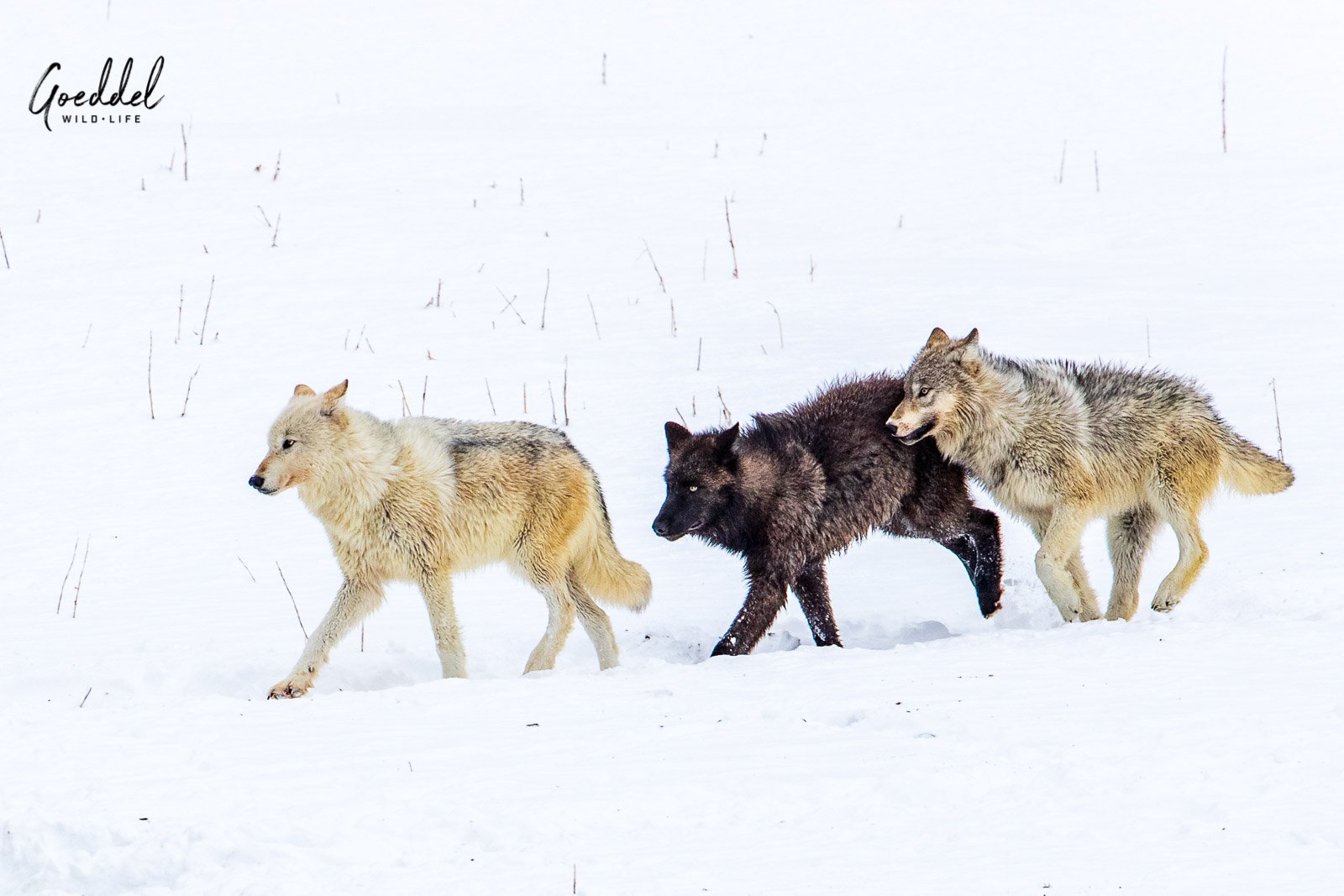Montana Fish and Wildlife Commission votes to close wolf hunt in Southwestern Montana
On January 28, 2022, the Montana Fish and Wildlife Commission voted to close wolf hunting and trapping in Region 3 of Southwest Montana for the remainder of the season once 82 wolves have been harvested from the area. As of today, 76 wolves have been killed in Region 3. Once in effect, the closure will include the two hunting units (313 and 316) that sit immediately north of Yellowstone National Park.
Yellowstone National Park’s iconic wolves are widely recognized as one of the nation’s most successful wildlife restoration efforts, yet Montana’s wolf hunting and trapping season has resulted in at least twenty wolves being killed from Yellowstone packs this fall and winter when they ventured a short distance out of the park and into units 313 and 316.
Wolves in Yellowstone National Park. (Photo © GoeddelGallery.com)
During the 2021 Montana legislative session, Greater Yellowstone Coalition worked with partner organizations and our Montana advocates to try to defeat the bad bills that set the stage for Montana’s permissive new wolf hunting and trapping regulations. Earlier this month, we reached out to Montana Governor Greg Gianforte, the Director of Montana Fish, Wildlife & Parks, and the Montana Fish and Wildlife Commission asking they restore science-based wildlife management in Montana and immediately close the wolf hunt on Yellowstone’s northern border.
Greater Yellowstone Coalition works to engage the wide range of people who care about the Greater Yellowstone Ecosystem, and ensure their voices are heard loud and clear by decision-makers. At the Montana Fish and Wildlife Commission meeting Friday, public support for continuing the wolf hunt in Region 3 was non-existent and the opposition to extensive hunting and trapping on Yellowstone’s border was undeniable.
There is robust local support for protecting Yellowstone’s wolves and the tremendous economic, scientific, and ecological value they provide. Estimates show they are responsible for bringing in roughly $80 million in tourism dollars annually. For the past seven years, local perspectives were reflected by strong limits to wolf hunting in management units 313 and 316.
Hunting units 313 and 316 (circled) sit on the northern boundary of Yellowstone National Park. We’re pushing to end the wolf hunt in these units for the rest of the season. (Photo Montana Fish, Wildlife & Parks Hunt Planner Map)
That changed in 2021 following an August vote by most of the Montana Fish and Wildlife Commission to eliminate the quota limits in hunting units 313 and 316. As of today, roughly 10% of the statewide harvest of 190 wolves, and 26% of harvest in Region 3, came from units 313 and 316. Wolves in this tiny fraction of the state (<5% of the lands in the region) are bearing a disproportionate burden of overall hunting mortality and are entirely Yellowstone Park wolves. This scenario could have been avoided if wildlife management decisions had been grounded in science. Elk population numbers and livestock conflicts are the most cited justifications for over-hunting of wolves, and neither of these issues are factors just north of Yellowstone.
While we are relieved the wolf hunting and trapping season in much of Southwest Montana will end soon, we are deeply disappointed that so much damage was done before the state of Montana committed to any action. That is why the Greater Yellowstone Coalition will continue to advocate that the Montana Fish and Wildlife Commission restore low quotas in hunting units 313 and 316 in future seasons. More broadly, we will continue to push for science-based wildlife management for wolves and all species in Greater Yellowstone.
We send an enormous thank you to our Montana supporters who stepped up and made their voices heard for Yellowstone’s wolves.
UPDATE: The wolf hunting and trapping in Region 3 closed on February 17. 2022.
—Brooke Shifrin, Wildlife Conservation Coordinator
The Greater Yellowstone Ecosystem is the land of 49+ Indigenous Tribes who maintain current and ancestral connections to the lands, waters, wildlife, plants, and more.



